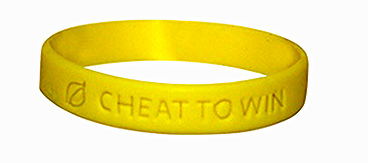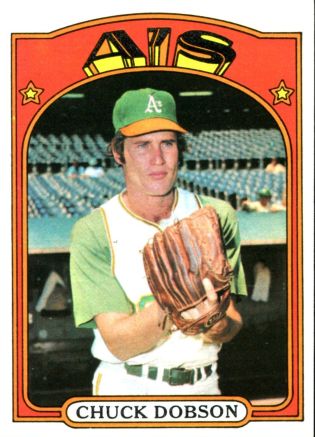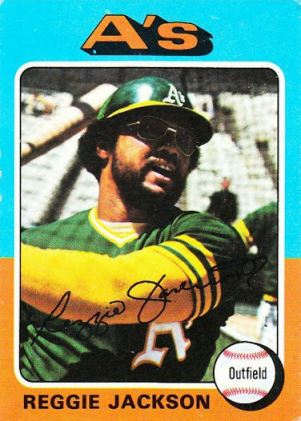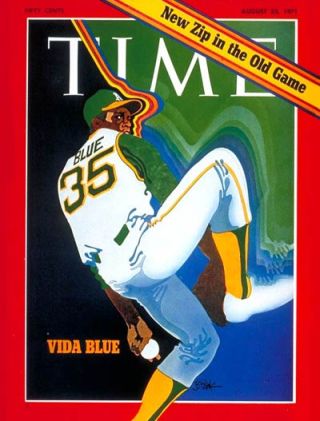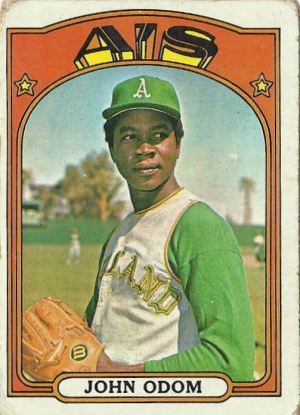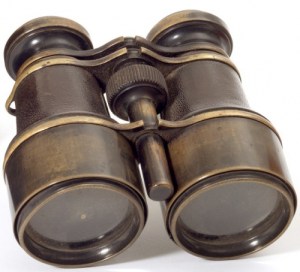 As I put the finishing touches on the first draft of my upcoming book about the championship A’s teams of the early 1970s (to be published by Houghton Mifflin Harcourt next March), I am once again appreciating how much easier—and how much more enjoyable—my work has been thanks to the exceptional skills of Ron Bergman. Bergman covered the team for the Oakland Tribune during its entire championship run, starting from the moment they moved to Oakland in 1968, and also wrote for The Sporting News during the championship years. His book about that era, “Mustache Gang,” remains the best of a quality crop of contemporary accounts. He was connected, insightful and so witty it makes one’s teeth ache, to borrow one of his own phrases.
As I put the finishing touches on the first draft of my upcoming book about the championship A’s teams of the early 1970s (to be published by Houghton Mifflin Harcourt next March), I am once again appreciating how much easier—and how much more enjoyable—my work has been thanks to the exceptional skills of Ron Bergman. Bergman covered the team for the Oakland Tribune during its entire championship run, starting from the moment they moved to Oakland in 1968, and also wrote for The Sporting News during the championship years. His book about that era, “Mustache Gang,” remains the best of a quality crop of contemporary accounts. He was connected, insightful and so witty it makes one’s teeth ache, to borrow one of his own phrases.
Bergman passed away yesterday, at age 80. He’d been in failing health for some time, to the point that he was unable to speak to me during the process of my reporting. Once upon a time, however, I got to encounter him with some regularity in the press box at AT&T Park. It was the early 2000s, and I was just coming up through the Bay Area sportswriting ranks. He was a columnist on the verge of retirement. To my uninformed self he was little more than an old guy with a thing for outsized leather jackets. I had no idea about his history or his ability, which is, enduringly, my own loss.
What Bergman did with those A’s was remarkable. He was so embedded that he became a regular in the bridge game run by pitchers Ken Holtzman and Rollie Fingers. He mined his sources with such authority that team owner Charlie Finley came to refer to him as “that little shit-stirrer”—a label that, even as it earned Bergman scant goodwill in the executive suite, garnered lasting respect from the rest of the press corps. (How far under Finley’s skin did he get? After Bergman wrote in The Sporting News that “In listening to the A’s play-by-play announcers you get the impression that there’s some sort of contest as to which one can make the most complimentary remarks about Charlie Finley,” the owner kicked him off the team’s charters and personally cancelled his hotel reservation for the next stop on the road trip.)
During the course of my reporting I read every issue of the Oakland Tribune between 1971 and 1976—a process that started out as “have to,” and ended up as “get to.” Bergie’s work made what could have been a mundane process insightful, educational and unforgettable. It seems only fitting to pull just a few highlights from my notes:
- In response to the 62 transactions Finley made during the course of the 1972 season, and the fact that Oakland suited up 48 players on the year, Bergman wrote, “Once an Athletic, always an Athletic … or if not once an Athletic, then eventually an Athletic.”
- He described Rollie Fingers during a hot streak as “on the verge of being declared unfair to hitters.”
- Discussing the strength of Oakland’s reserves in comparison to Cincinnati during the 1972 World Series, he wrote, “The A’s have a great bench. Theirs is lowercase. The Reds’ Bench is tremendous. The Reds’ bench is underwhelming.”
- Describing executive John Claiborne, who had just quit Oakland’s dysfunctional front office: “Unlike most office help hired by Finley in his baseball operations, Claiborne had some unusual handicaps. He wasn’t related by either blood or marriage to the owner. He had some baseball experience before joining the A’s. And he was competent.”
After the San Jose Mercury pulled its writers off the road in 1974, Bergman was the only one left traveling with the team. Said Jon Miller, one of the club’s broadcasters that season, “We would go into a city like New York, where they’d have eight or nine writers, and they’d come on the press box PA and say, ‘We want to welcome the Oakland press corps: Ron Bergman.’ He was it.”
He was it, in so many ways.
